Results 21 to 30 of 279
-
-
June 29th, 2007 09:15 AM #22
Hopefully it's still in someone's garage today but I doubt if its anywhere near running condition given the actual project itself was more than twelve years ago.
The person to look for in regards to the MicroCar's current location & condition would be Mr. Samuel Cruz, formerly a professor and Manufacturing Engineering department chairman in DLSU years ago.
-
June 29th, 2007 02:27 PM #23
Looks like DLSU & St Benilde are the places where things like this are happening. Maybe you can invite your former profs to the forums so I can retire and return to making bread and butter.

FYI, there's another proponent in this forum who's a confessed alumnus, and he proposes to build a minicar-people mover (kaya lang 4wheels). Guess who?
Last edited by dprox; June 29th, 2007 at 03:59 PM.
-
 Tsikot Member Rank 4
Tsikot Member Rank 4

- Join Date
- Jan 2003
- Posts
- 1,403
July 6th, 2007 02:21 PM #24Another three wheeler -
http://www.fuelvaporcar.com/html/the_car.html
Three wheels better than 4?:
The “alé” features a unique 3-wheeled configuration: 2 in the front, and one in the rear. The front wheels drive and steer the vehicle. This design enables the car to perform at a superb level, particularly in cornering, with the car easily pulling 1.7 g’s in corners during track testing on street tires. The three-wheeled automotive platform also aid in improving fuel efficiency and aerodynamics.
Vapor system:
The car’s key innovation's are the fuel vapor system and it's light weight aerodynamic body. This fuel vapor technology (which is in the patent pending process) allows the engine to run on “fuel vapors” rather than liquid fuel. The majority of gas engines today run 14.7:1 – (14.7 parts air to 1 part gasoline). This proprietary fuel vapor system allows the “alé” to run on a ratio of over 20:1 without compromising performance. According to the textbooks, this ratio is impossible, as a standard engine would not start or run on a air/fuel ratio this low. With a 10 gallon gas tank found on most vehicles, the “alé” can travel from Vancouver BC to San Francisco CA on one tank. Over 15 hours of driving without filling up.
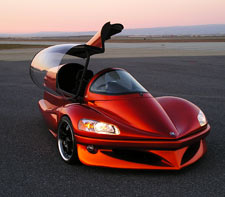
Last edited by architect; July 6th, 2007 at 02:24 PM.
-
 Tsikot Member Rank 4
Tsikot Member Rank 4

- Join Date
- Jan 2003
- Posts
- 1,403
July 6th, 2007 02:22 PM #25Performance:
Not only does the “alé” have extreme mileage capabilities, but its performance is outstanding and better than many high-end sports cars. It accelerates from 0-60 in 5 seconds, and will pull over 1.7 g’s in hard corner's on street tires. Brad Zimmerman, head tech for the company stated during testing at the Mission race track, “I drove it hard for 4 solid hours, throwing it into corners, accelerating and braking hard. The car’s performance is spectacular. After all that hard driving, we only went through $10 in gas.”

Emissions:
The “alé” runs on regular gasoline, and easily achieves the level of “super low” emissions with a 30% reduction in CO2. Even more impressive is the fact that all the data to date has been gathered without a catalytic converter.
Automotive X-Prize
FuelVapor Technologies will be entering the “alé” in the "Automotive X-Prize" competition for the most fuel efficient production vehicle http://xprize.acrobat.com/p92151066/.
The Future:
This is the first time the public have had a chance to view the “alé”. The company is currently seeking investors to take the “alé” into production.
Vehicle SpecificationsBodyHand-layed fiberglass compositeChassisFull tube frame with roll cageEngineHigh mileage Honda engineTurbo Charged 1500cc2 Stage single cam VtecGasoline vapor fuel management system180 HP0-60 MPH in 5 seconds1/4 mile time of 12.9 secondsTransmission5 speed standard, or 4 speed over drive automaticFront SuspensionHonda CRX with fully adjustable coil overRear SuspensionSingle sided swing arm with fully adjustable coil overSteeringPorsche 911 rack and pinion (2.25 turns lock-to-lock)Front BrakesFront discs: 12.1" diameter vented and scallopped rotors, 4-piston calipersRear Brakes10" disc brakesWheels & TiresAluminum 18" X 8" front and rearConfigurationTwo seat tandem. - shoulder seat beltsDimensionsWheelbase: 110”Outside to outside track: 71.5"Length: 174’’Height: 50“Dry Weight: 1400 lbsFuel Capacity: 10 gal.Top speed: Electronically limited to 140 mph.
-
July 20th, 2007 09:17 PM #26
ANSWER: Implied has it's basis... For presentation purposes, concept vehicles for street use are normally presented with lower stance or profile specially for American use. A mini cooper (the old one) shares the same riding height or even bumper height with the TRIMA... A Mini being ran over by a Bus is kind of a rare occurence. TRIMA in terms of size would fall into a Small Car Category... but Small doesnt necessarily means SLOW or Unresponsive. The idea is to provide above average power and controlability to the Driver, which eventually leads to SAFER road travel. Accidents happen when these situations are present: 1. You'r brakes are not strong enough. 2. You Car isn't fast enough to overtake a Bus or a Long Vehicle or Long Traffic., 3. You Vehicle doesn't seem to stick to the curves during hi speed... and 4. somebody fell asleep.
TRIMA is a dynamic handling Driver-Centric Vehicle. There is minimal Mechanical Loss in its power train... imagine, your normal car has a 1600cc engine and it's driving 2 wheels at the back or the front, power goes through the drive shaft, to the differential and again it passes through the axles and to the wheels. The wheels have rotational weights that consumes energy. Therefore, half of your engine power is literally driving the other wheel which makes it only 800cc per wheel minus power losses on the drive train which can account to about 30% more or less.
The TRIMA doesn't suffer from these power losses since there is no differential to drive to begin with. If we will place a 1000cc engine in it, then we literally have 1000cc on the wheel. since the Rear Wheel is centrally positioned, the vehicle always experience POSITIVE TRACTION. Race Cars use POSITRAK differentials in order to achieve this, but the TRIMA or any 3-wheeled cars are born with it.
STABILITY at high speeds; the wheel layout can be compared to a Hi-Speed Katamaran Power Boat... it has its driving force between the TWIN front Hulls.. this is an efficient and stable layout used for Hi-Speed Application.
HELMET NO MORE; since the cars body is your first line of defense against road hazard, the need for other safety gear becomes minimal to nill. However, Safety Impact Beams are integrated inside the Door Shells and the Internal Subframe acts as a passive safety feature since it is also a roll cage and an internal vehicle skeleton in one.
All in all, the above features creates an over-all experience which will make driving a TRIMA an adventure. This will keep the driver awake. And since TRIMA or any other small cars are painted with lighter colors, the attention it will be getting will also keep the hazard on you away in a passive manner.
There is still more interesting facts about this configuration.... but I hope the above answers your question.
hERE'S a glimpse of the TRIMA GTX CONCEPT... The Full-Racing Version.
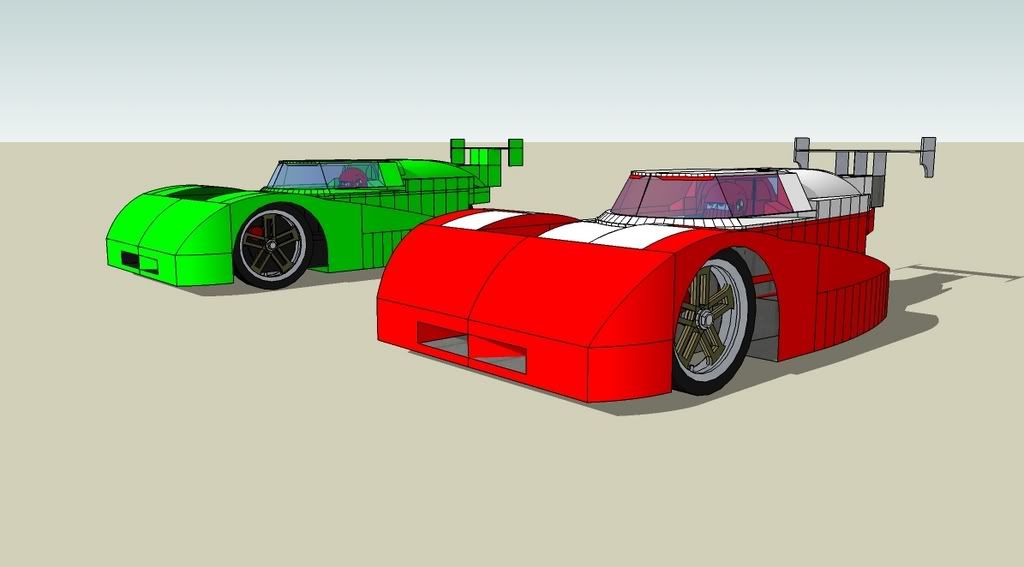
Here a variant... a more civilian configuration...
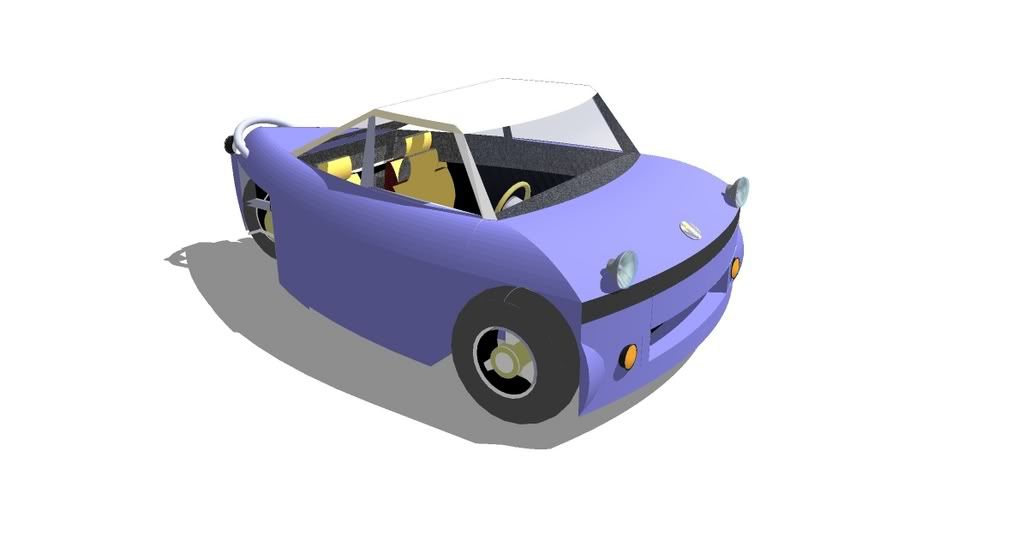
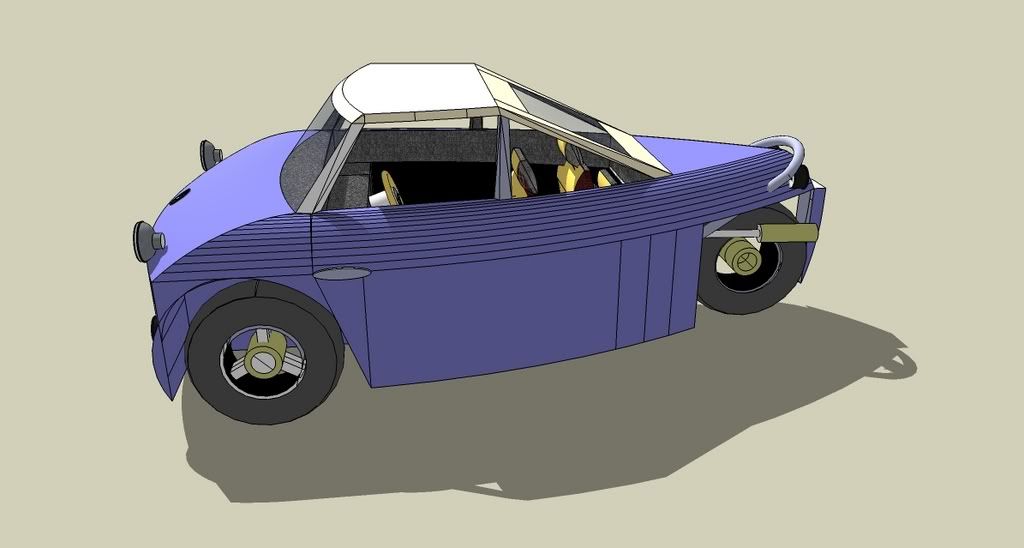
And the Trima UTILI3 Experiment Concept.
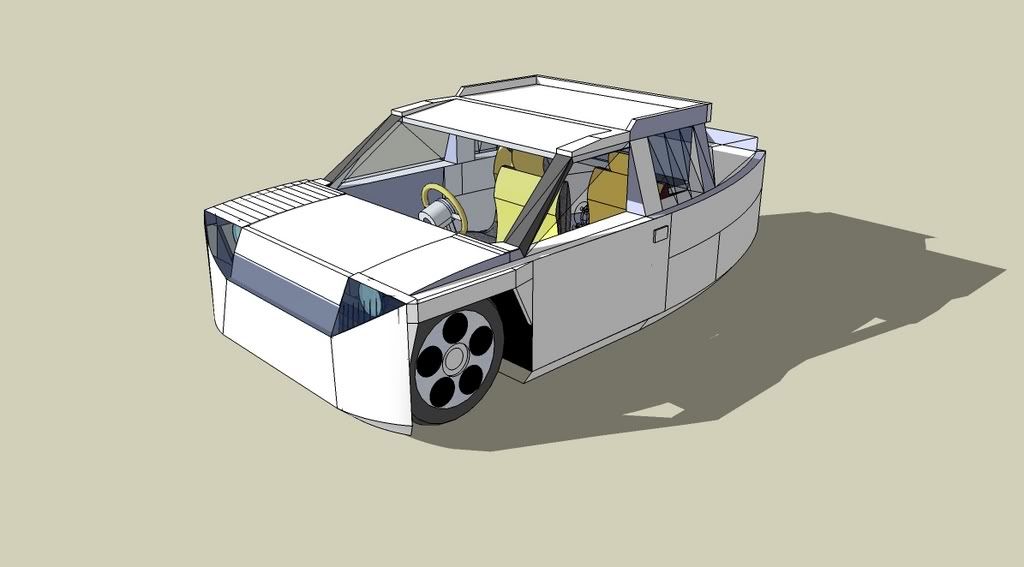
[SIZE=1]EHNRIKO Design Images. 2007 ALL RIGHTS RESERVED.[/SIZE]
all the best...
-
 Tsikot Member Rank 4
Tsikot Member Rank 4

- Join Date
- Jan 2003
- Posts
- 1,403
-
July 21st, 2007 01:15 PM #28
Any plans to manufacture the Trima? Or a prototype at least?
What is that on the rear end of the blue Trima, a handle? Is that how you would reverse it - by pulling the vehicle? Motorcycle engines have no reverse gear.
I prefer free-standing headlights and cycle type fenders (front) for three-wheelers rather than having lights and fenders flush with the body. This gives three-wheelers a visual connection to motorcycles. That way, people will think of them as motorcycles with one extra wheel rather than cars missing a wheel.
If the Trima and the Tsikot sports car were to go into production, it would be a good idea for both cars to share front suspension and steering assemblies to lower the cost.
-
July 22nd, 2007 03:04 AM #29
PM the design core group for your first question.
The Rear Pull Bar actually belongs to the rear subframe of a Honda Dio- Scooter, which I didn't remove. since it will have many purpose.
Regarding Reverse... Motorcycles are able to go on reverse... but it will need to shut the engine first and with a reversing switch the starters polarity and crank can go the opposite direction - the engine will go backwards... I haven't tried it yet, but a friend of mine who is into Motorbike Racing told me about this and explained to me how it can be done, I believe it can be done... since I was able to witness a Tricycle going on reverse with a 125cc engine in Cavite City way back in the early eighties. However, the push and pull handle at the Back of the T V.2 will serve its purposes.
Off road 2 seater Full size GoKarts are very popular here in Saudi, as well as in China. Theyre front suspensions are simple strut links, similar to Formula 1's, I believe we wont have any problem in manufacturing this in the Philippines... The strut links are mainly made out of Mild Steel tubular pipes, a holding fixture will be the main engineering work here to cut and weld the tubes and assemble them with available local ball joints and bushings. The wheel spindles can be that of normal motorcycles with disk brakes. Using an automotive (car) type suspension in front will only make this vehicle heavier... not ideal, however, the suzuki carry might have a lighter suspension, this we have to find out.
BMW made a concept car 5 years ago or so, it was built out of motorcycle parts, it has 4 wheels and 2 seats as well. It looked like the Lotus super 7, but a lot smaller and lower. They called it a 4 wheeled motorcycle. In Japan, a Suzuki Hayabusa Engine was fitted to a formula V Race car... this formula of fitting MC engines to automobiles was a practice done in the 1960's by sir John Cooper in England when he fitted honda Engines to his racing Mini's. They all have surprising results. The Formula V in Japan attained a top speed of 120 MPH... If it had only 3 wheels it could've attained more than that.
At any rate, fabricating our own front suspension can and will greatly reduce cost. Any automotive engineer or racing enthusiast locally can easily design a Hi-Performance Front suspension for this concept.
-
July 23rd, 2007 02:58 AM #30
Architect,
Here are some GTX's on the West Wing.... White House in the background.
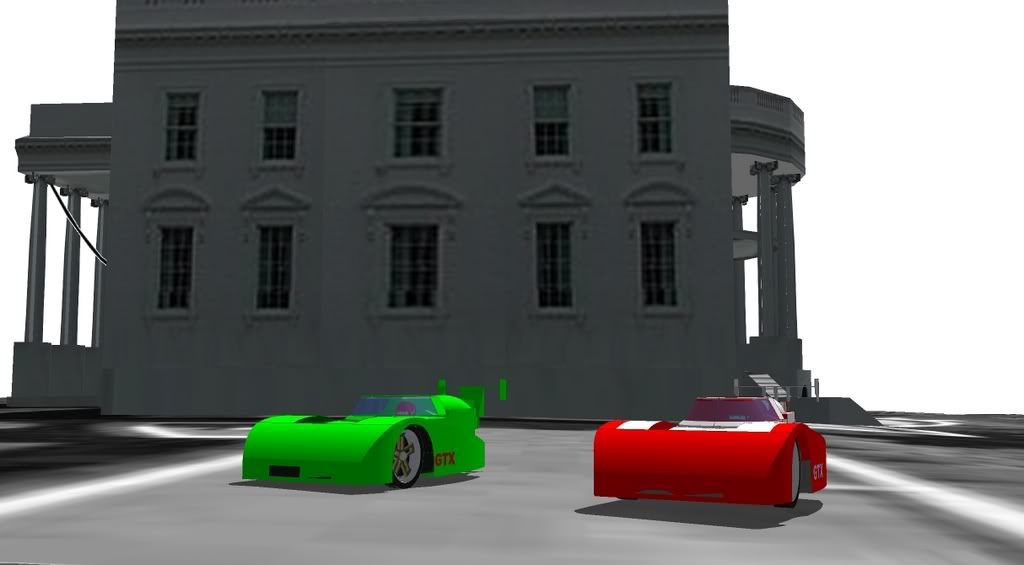
Up Close...
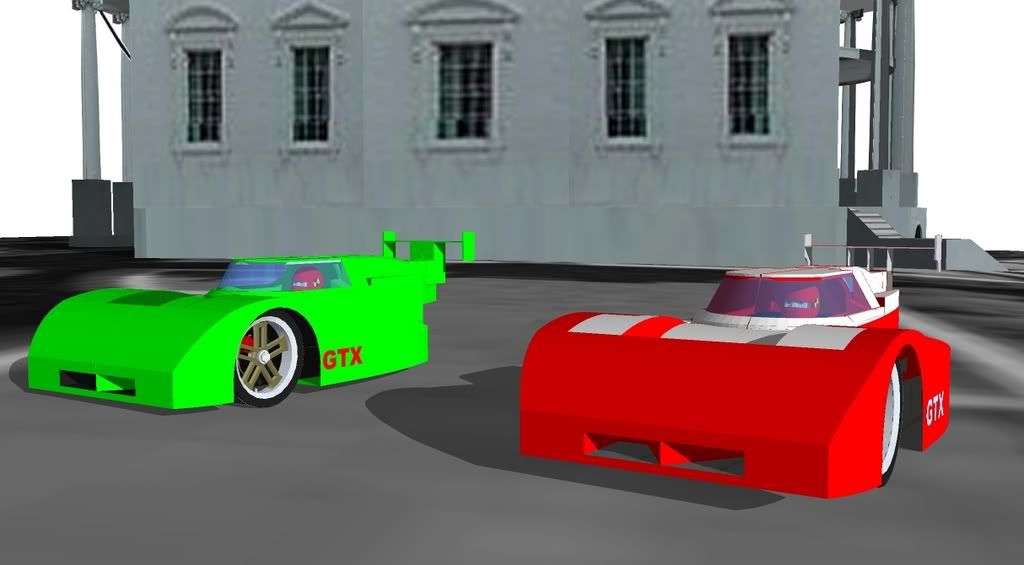












As expected, in response to Tesla’s entry into the Philippines market, Ford will be bringing in the...
Tesla Philippines